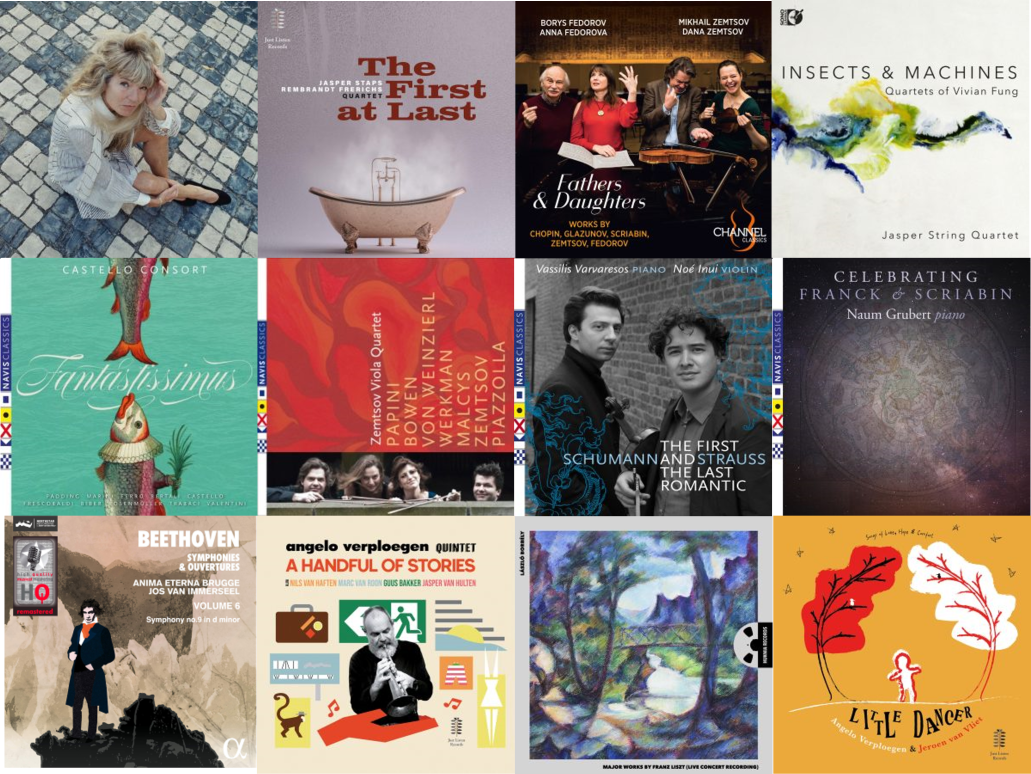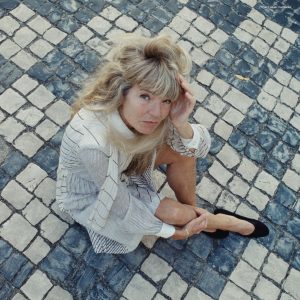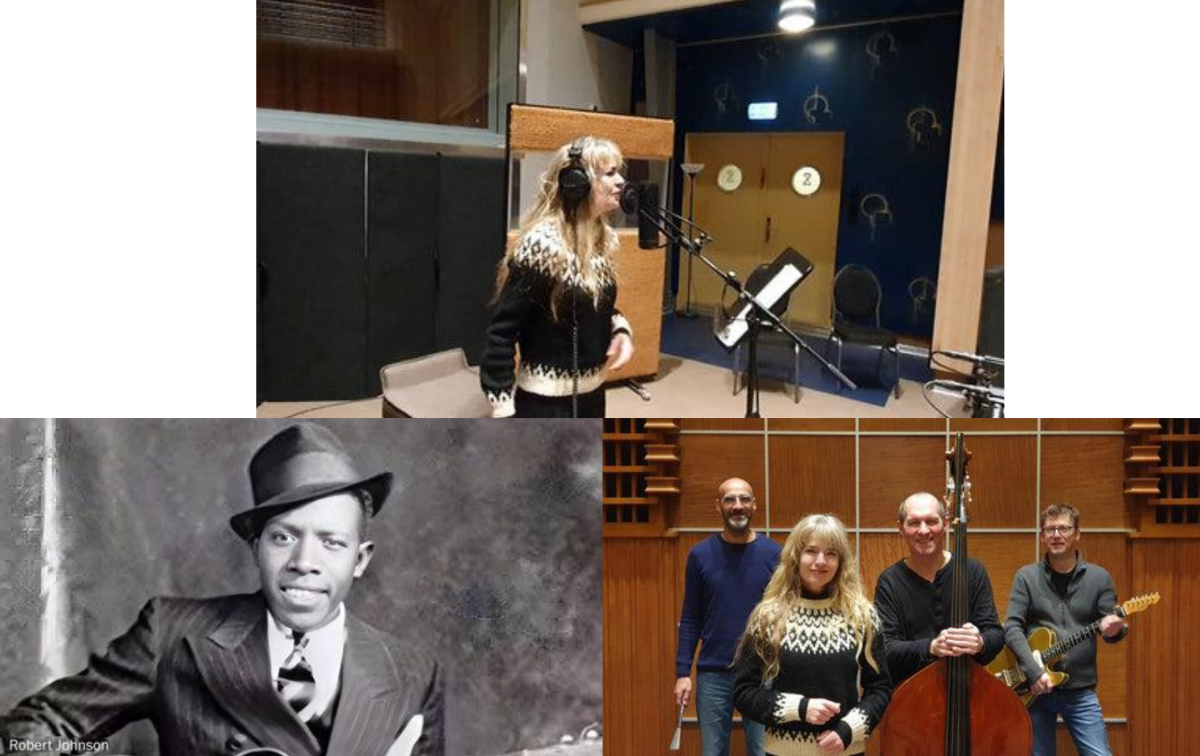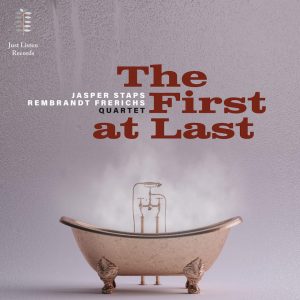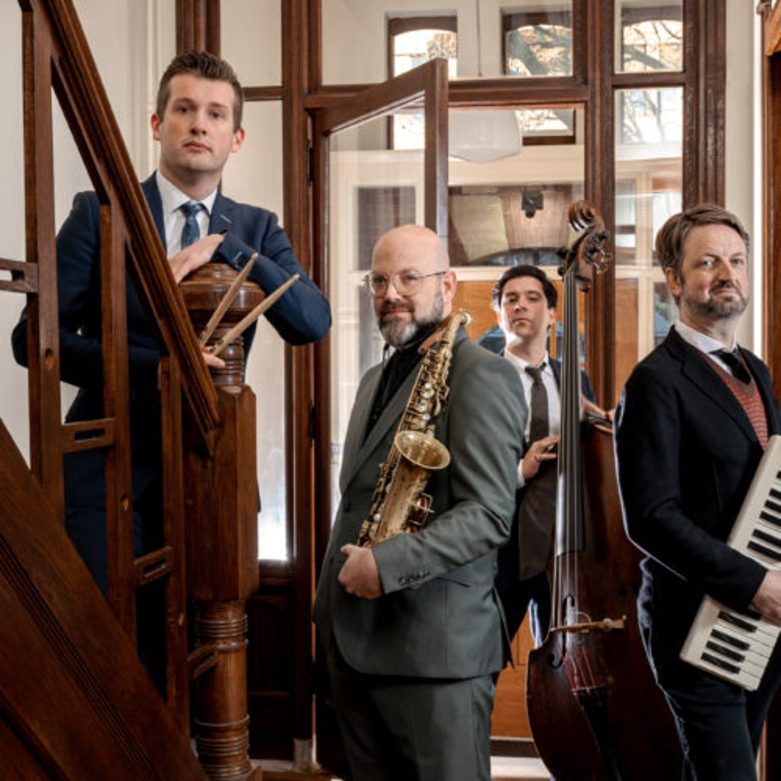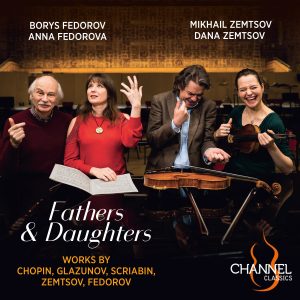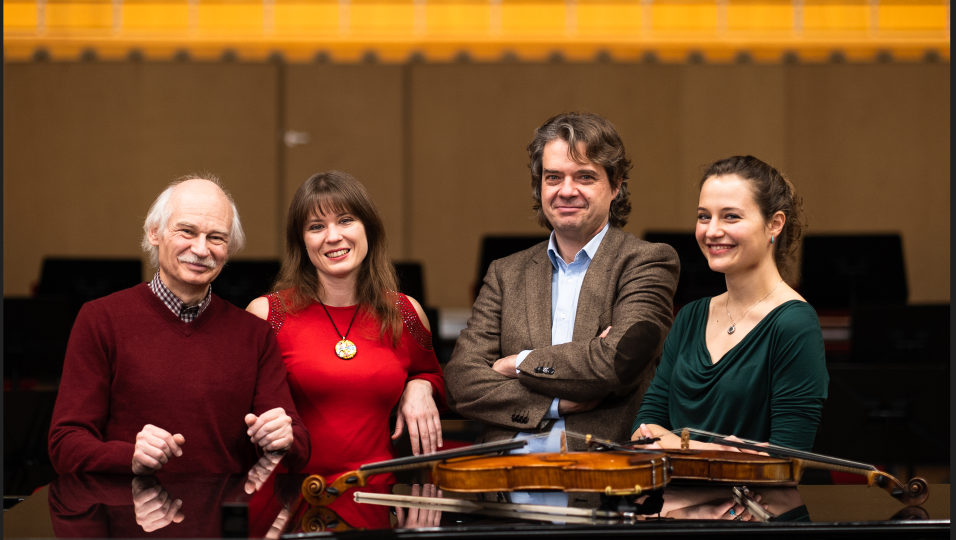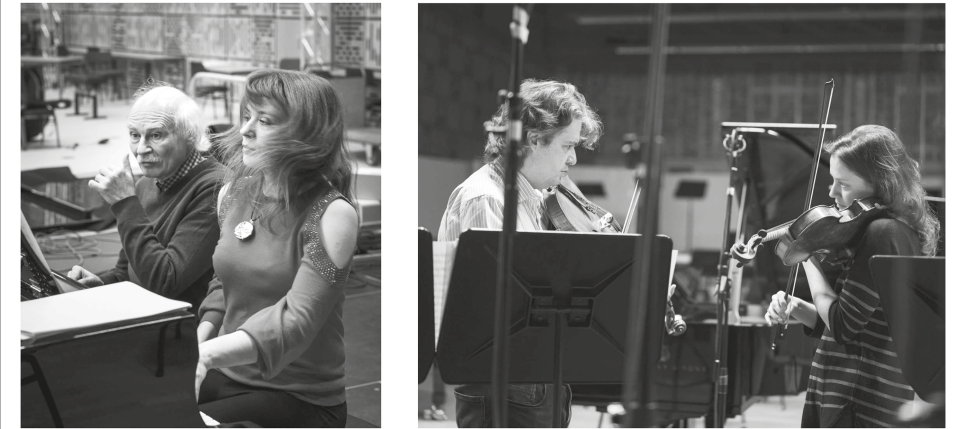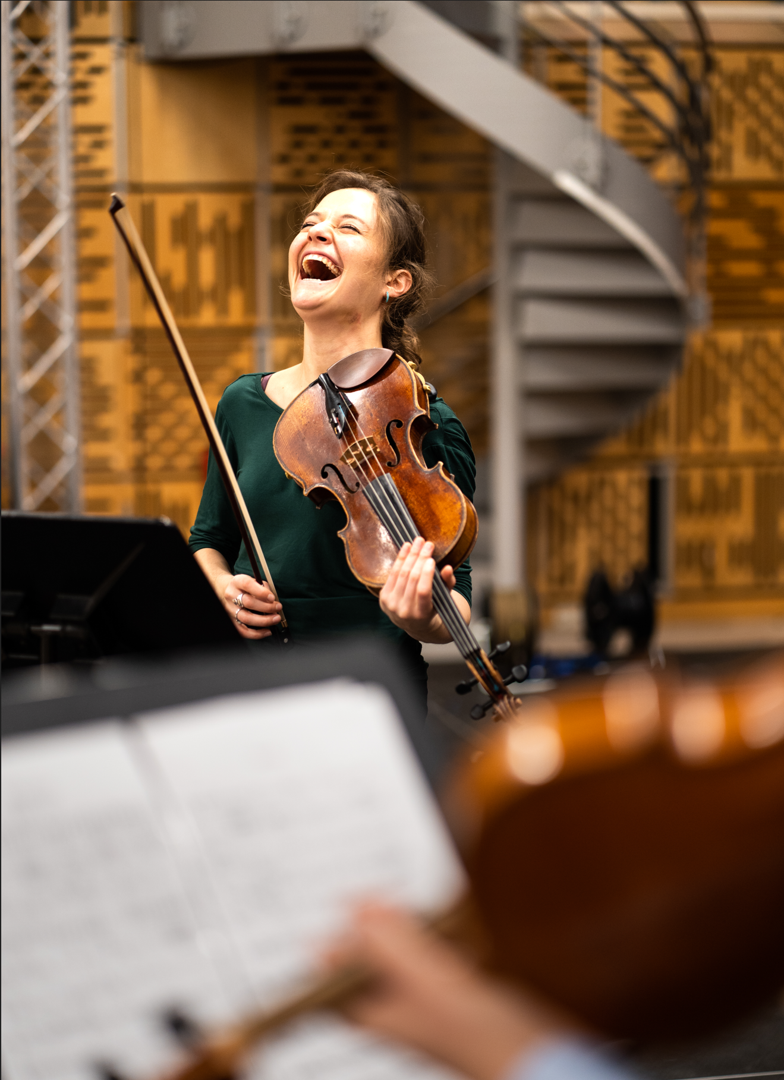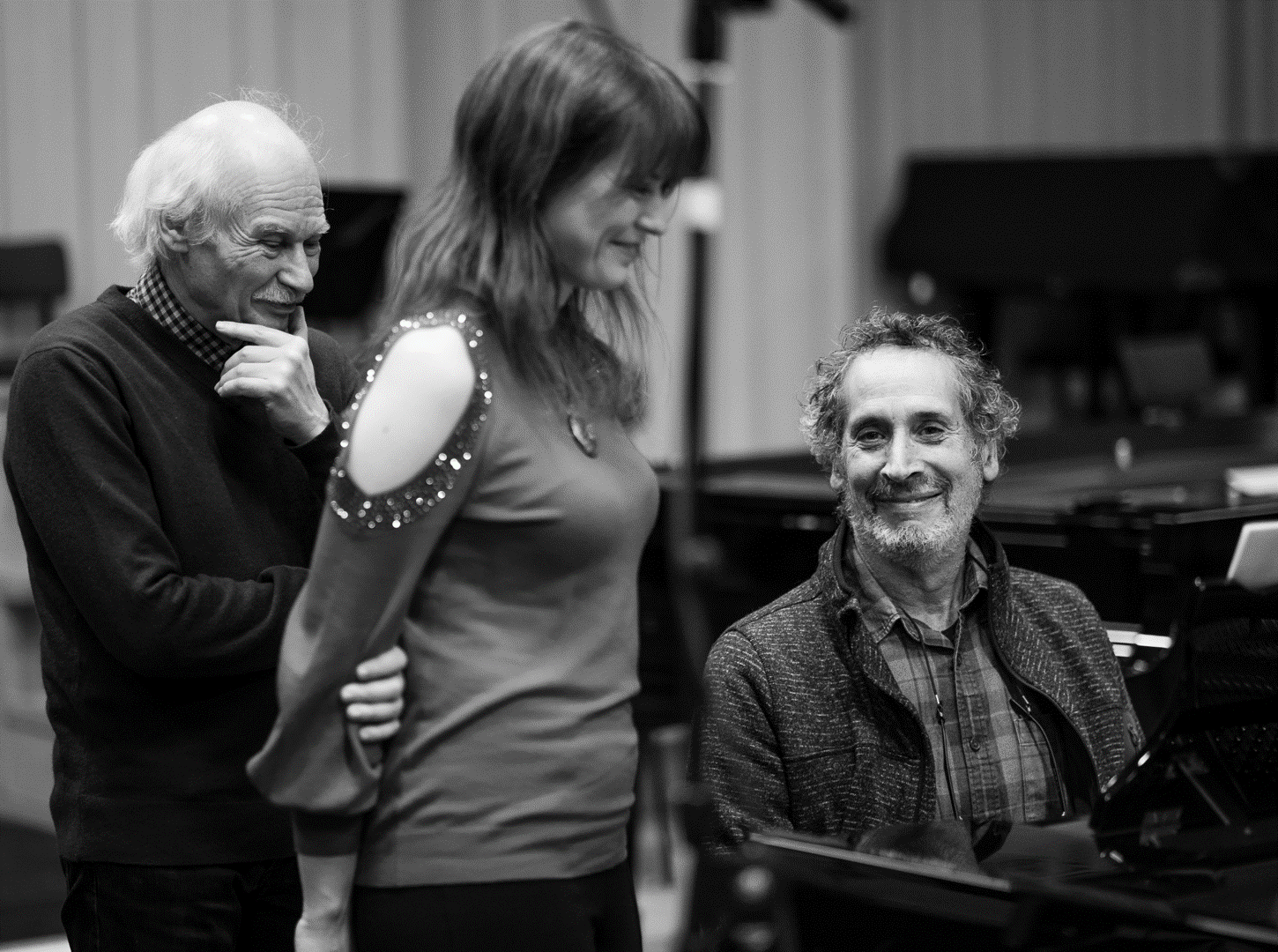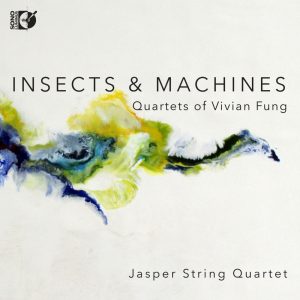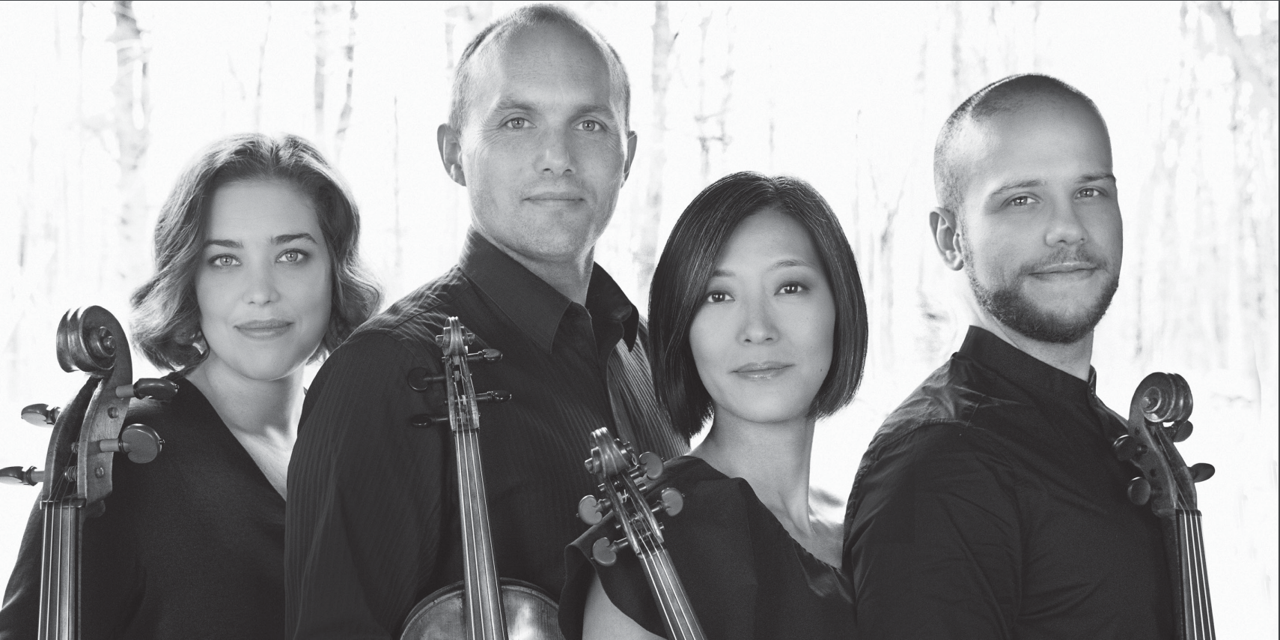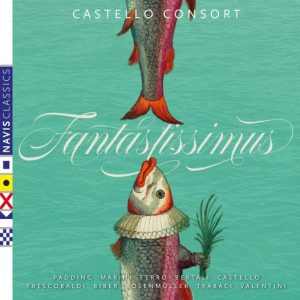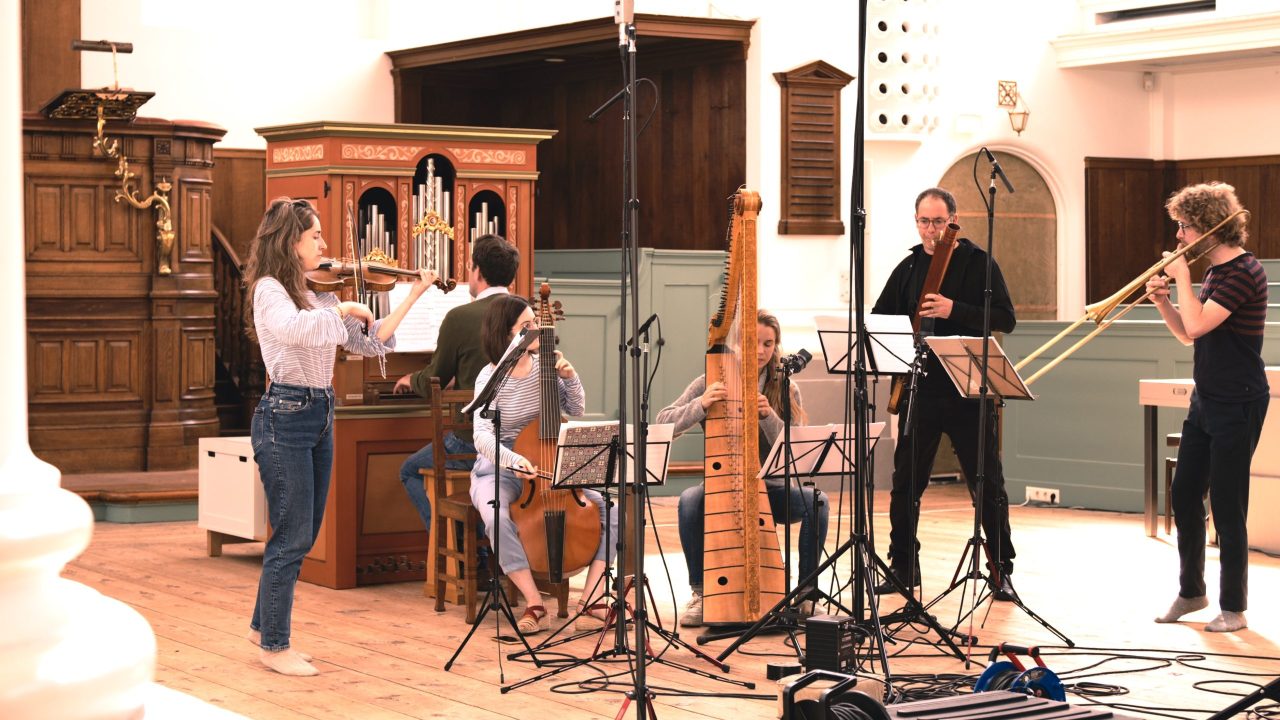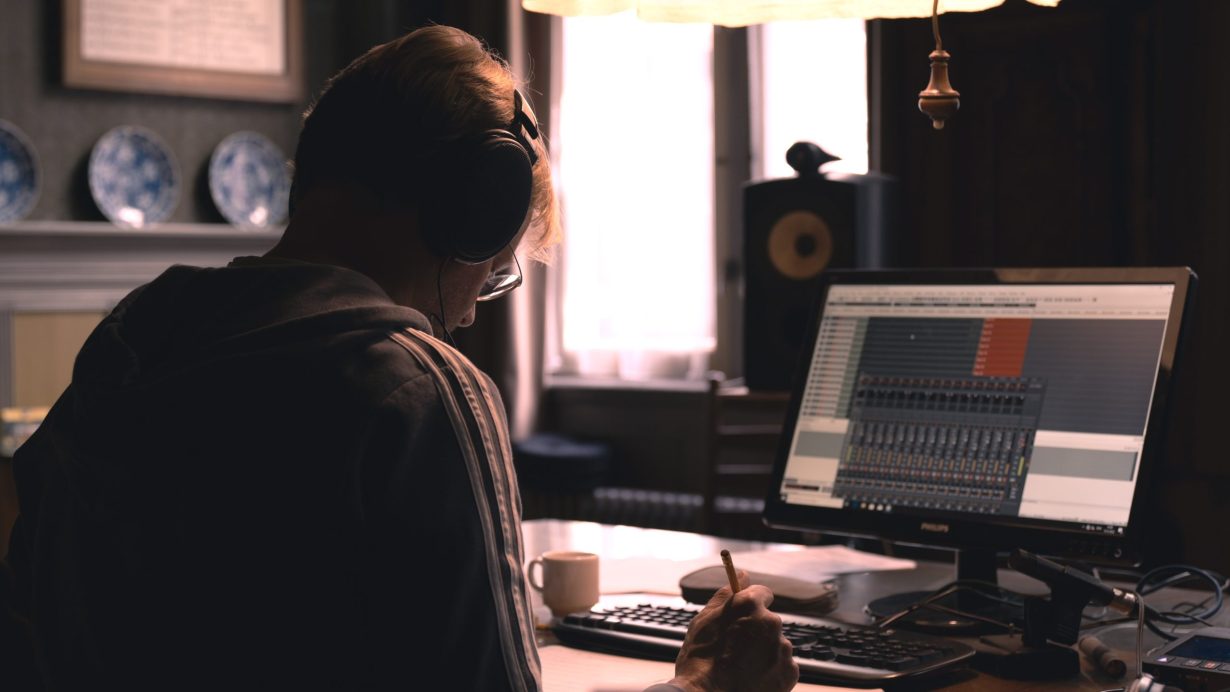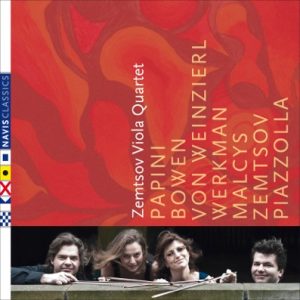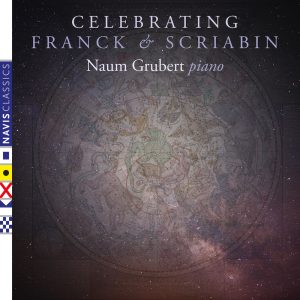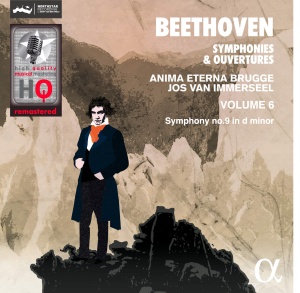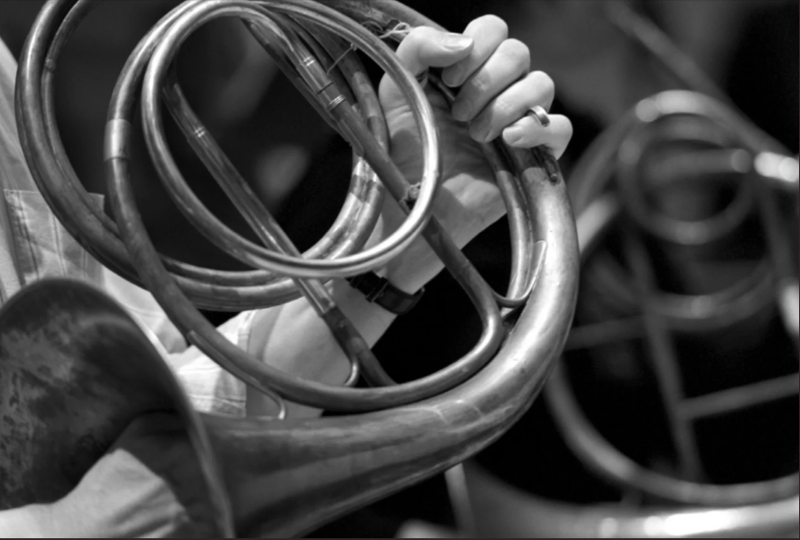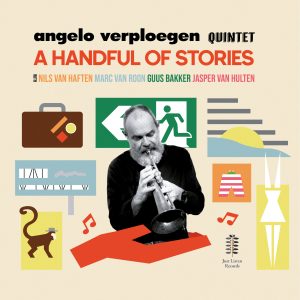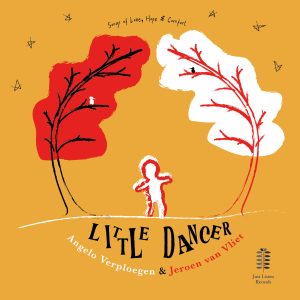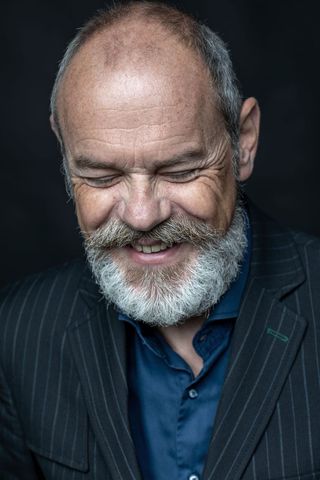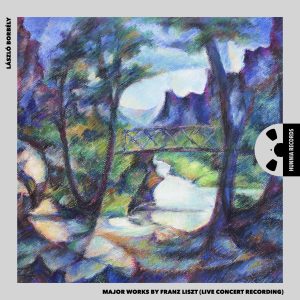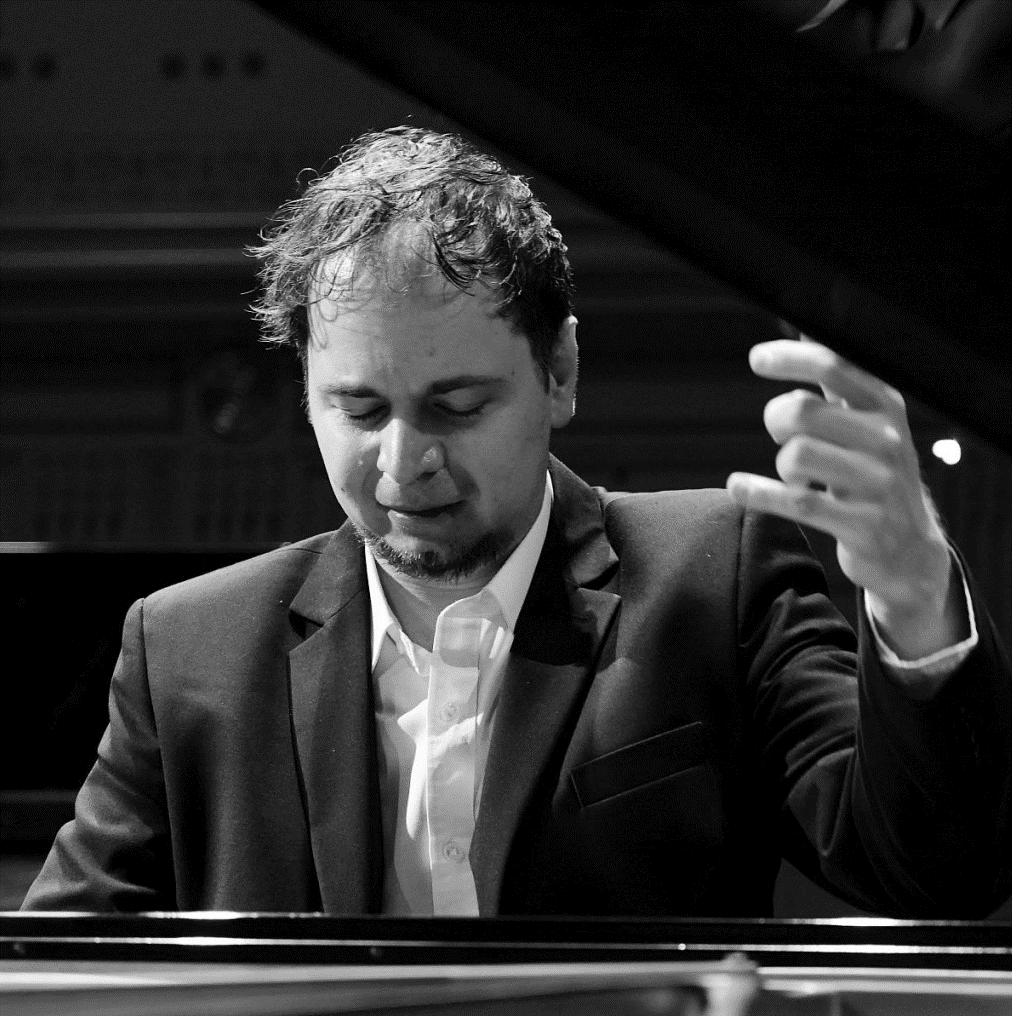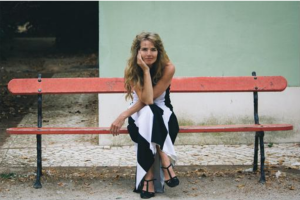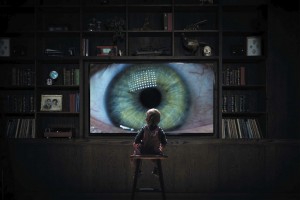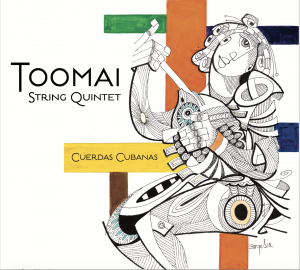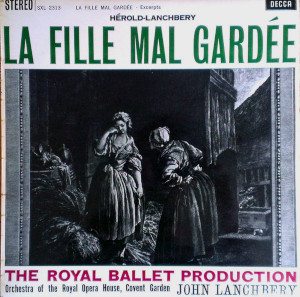I'm excited about this most recent group of Recent Finds, all released over this past year at NativeDSD. Included are a great new album from Carmen Gomes and Sound Liaison, a new Rembrandt Frerichs album on Just Listen Records, Anna Fedorova and Dana Zemtsov on Channel Classics, several albums from the Navis Classics label which I've been delighted to discover, an immensely satisfying remastering of a complete Beethoven Symphonies cycle recorded by Bert van der Wolf, two new albums for flugelhorn player Angelo Verploegen recorded by Jared Sacks for Just Listen Records, and a new Pure DSD256 recording from Hunnia Records of works by Liszt by the excellent pianist László Borbély. Enjoy.
Carmen Gomes Inc., Stones in my Passageway. Sound Liaison 2023 (32bit DXD, DSD256) HERE
Wonderfully fantastic! Carmen Gomes at her inimitable best performing highly personal interpretations of the songs of legendary blues singer Robert Johnson. Gomes is a master communicator. "Imagine Robert Johnson walking alone late at night in the 1930s United States of America, enroute to his sad demise in Greenwood, Mississippi. As he walks, he reflects upon his life, accompanied by the sounds of of the night and the echoes of his memories." That is the excellent summary of the theme of this album. But it still fails to fully capture the magic of Gomes and her band as they pay homage to these songs in their contemporary reimagination honoring this music.
This album deserves recognition as one of the best vocal albums released in 2023.
Carmen Gomes Inc. previously paid tribute to blues great Robert Johnson on their excellent album Up Jumped The Devil, released in 2020 (HERE). With Stones in my Passageway, Gomes and her compatriots move to a further high level of music interpretation. As always, the highly communicative Gomes makes these songs come alive in a very personal way. Her phrasing, dynamics and inflection are simply remarkable. She sings directly, honestly, without unnecessary embellishment or vocal manipulation. Her sultry delivery of inspired interpretations of this music simply immerses one into the soundscape being created by the collaborative work of Gomes and her band members. And the work of her accompanying band members truly shines in this recording. The percussion work of drummer Bert Kamsteeg makes a strong contribution, often a central one, complementing the vocals of Gomes. Contributions from guitarist Folker Tettero and double-bassist Peter Bjørnild are equally strong. These four musicians are beautifully in sync with each other, consistently complementing and extending each other's contributions to the music.
The recording quality is among the best recordings I've heard from Sound Liaison recording engineer Frans de Rond. And he's made quite a few of my favorite recordings. But, when recording Carmen Gomes, Frans seems to rise to yet another level of masterful work capturing the sound of this band. Frans has been Carmen Gomes' preferred recording engineer for 27 years for good reason! In this recording, Frans again applies his One Mic + recording technique to virtually immersive effect, but with some variation on the process, as described by Frans below in an extract from the enclosed booklet.
The album is 15 tracks of pure enjoyment—excellent contemporary blues that honors the traditions of the genre and the music of Robert Johnson. If you're a blues fan, get this album. If you love female vocals, get this album. If you simply enjoy great music making, get this album. Did I say this enough? Get this album. You'll love it.
Frans de Rond, writing about the microphone placement choices and recording process for Stones in my Passageway in the enclosed booklet:
"There are several reasons I call this a 'One Mic+' recording.
"In this recording, the role of drummer Bert Kampsteeg is very important. We wanted him to be able to play as freely and dynamically as possible. I realized that if we had Carmen up close to the one mic she was creating an acoustic baffle that covered up certain frequencies. The same was true for Peter Bjørnild's double bass.
"By moving Carmen and bassist Peter Bjørnild further away and supporting them with two Josephson C700A microphones, the drum sound got much more present. We wanted the small 'soundscape' vignettes to have a very dark atmosphere (Peter said he wanted them to sound as dark as the Mississippi night), so I decided to add a spaced pair of Josephson C617 microphones up very high in the studio and let them be our main source of ambiance. That worked very well. And also the deep drop-tuned low notes from the double bass that Peter employed on some of the soundscapes got picked up very well by that pair. Such low notes are almost impossible to hear close up, somehow you only hear the upper harmonics generated, so that was an extra benefit of the ambient pair. And it made me fall even more in love with the sound of Studio 2.
"You could argue that this is a return to old-fashioned multi-mic recording but I don't think that is true. The drums, guitar, and the main part of the double bass sound are still coming from the Josephson C700S. The microphone is key to the sound stage we have created.
"The two C700A support microphones are identical to the C700S except that each has only one figure of 8 capsules. The special quality of the C700A is that spill coloration is much less of a problem. So it is a perfect spot microphone."
The sonic results of Frans' choices are remarkable and imminently enjoyable. Well done!
The First at Last, Jasper Staps Rembrandt Frerichs Quartet. Just Listen Records 2023 (32bit, DSD256) HERE
When excellent musicians, who have known and performed with each other for decades, come together for a debut album we can expect something very special to happen. And this is what we have here. Jazz in its most subtle, complex, and entrancing best. With Jasper Sachs blowing softly, emotively on his sax, and Rembrandt Frerichs complimenting, sometimes leading, on his delicately voiced 1903 Erard fortepiano, what we get is simply superb jazz at the highest level.
Original works by Staps or Frerichs alternate with standards from Ruud Bos, Billy Strayhorn, Gerry Mulligan, Cole Porter and Jerome Kern to take us on a very enjoyable, somewhat laid back, but definitely swinging musical exploration.
Frerichs' vintage fortepiano combines with Staps' saxophone for a lush, complex, mix of timbre. Frerichs comments, "I chose the piano because of Jasper's sound. Jasper has such a beautiful timbre—when he plays you step into a bath of sound. I wanted the same vintage tone, and playing on a first-rate instrument that they might have played on in the fifties—it's a nod to classical chamber music, historical performance practice, as well as the jazz we listened to as boys.”
I've not previously listened to Jerome Staps play, but I am quite enjoying his free flowing rhythm and nuanced tone. Rembrandt Frerichs is a musician whose recordings I know well, and whose new recordings I always seek out as a special treat to enjoy. For some of his other albums, I encourage you to explore from among these various reviews previously posted HERE.
All of this wonderful music making is enhanced by the excellent sonics achieved by the ever-excellent recording engineer, Jared Sacks. In a "live" recording session, with all the musicians performing together in a natural acoustic setting, Jared has worked his magic to achieve a perfect balance of direct and reflected sound that is alive with energy and detail. As listeners, we are invited to the front row chairs to enjoy music making at the highest level in the best recorded sound available today! Outstanding work by all.
The Jasper Sachs Rembrandt Frerichs Quartet
Fathers and Daughters, Fedorova and Zemtsov. Channel Classics 2023 (32bit DXD, DSD256) HERE
Two of the more engaging and immensely talented performers on the current musical scene are pianist Anna Fedorova and violist Dana Zemtsov. I have been enjoying their respective recordings for several years and am always happy to see another release. I particularly enjoy the several recordings they have made together: Silhouettes (2020) and Dutch Hidden Gems (2022). And in this album, we not only get to have them recording together once again, we also have their highly respected fathers (each of whom has had very successful music careers) joining them for a fathers and daughters recital.
The album opens with a thoroughly delightful work, Armachord-Childhood Memories, written by Borys Fedorova and performed by Dana and Anna. Then we have a softly nostalgic, lyrical and quite pretty work composed by Mikhail Zemtsov, Melodies im Alten Stil, performed by Mikhail and Anna. From here we move to music of Chopin, Scriabin, Glazunov, Roslavets, Tsfasman, and Kugel (the last three completely unknown to me, but most enjoyable). The closing work, Tango Suite, composed by Mikhail Zemtsov, brings everyone together with fathers joining daughters in a piano duo, viola duo quartet.
Throughout years of friendship, violist Dana Zemtsov and pianist Anna Fedorova discovered many similarities in their upbringing. Their parents each met their respective spouses in Moscow's conservatory. Dana's parents—Julia Dinerstein and Mikhail Zemtsov—are renowned violists and professors. Anna's parents—Tatiana Abayeva and Borys Fedorov—are renowned pianists and professors. Both of their fathers are composers, too.
But don't get the idea that this is simply some gimmick of an album. No, this is an album made by technically masterful musicians who come to share a love of their art in truly engaging performances. And we are the beneficiaries of these magnificent artists across two generations as they perform together with a joy that is infectious. When Borys and Mihail perform the Roslavets Viola Sonata one clearly hears two master musicians collaborating as they perform of work of most enjoyable depth and complexity. When Dana and her father Mikhail perform the Tsfasman Es Tut Mir Leid, there is a tangible frisson in the air as the two playfully bounce phrases from one to the other. This give and take continues as they conclude their duo performance with the Mexican dance Cielito Lindo (arranged by Dana). And when Anna and her father Borys perform the Scriabin Fantasy in A minor, op. Posth., one feels that special emotional tie as they share the keyboard. It is all a truly remarkable recital.
I thoroughly enjoyed all of the generational duos, but I have to admit that my engagement came to full attention each time Anna and Dana returned to the stage together. I find that they make magic happen when they perform together. There is an ineffable quality about their music-making as a duo that I find completely enthralling, even if I can't define what is affecting me.
Get this album and partake in the joy these fathers and daughters share with us!
A word about the recording...
This is yet another masterfully engineered recording by Jared Sacks. I don't know how many superlatives I can include in a single article, but I must share my enthusiasm for the wonderful sonics with which he has captured this music making. The balances are all superb—direct to reflected sound, and instrument to instrument. Jared has a remarkable ear for capturing the natural acoustic of the recording venue. He allows the delicate harmonics to bloom and fully develop so that the instruments sound like real instruments being performed in a real space. It is all simply marvelous. And he does this consistently with recording, after recording, after recording. Elsewhere in this article, I include a review of his superbly good jazz recording on Just Listen Records, The First at Last. He commented to me that he thought that recording was one of he was particularly, and it is indeed an excellent recording. This recording is just as good, if not better.
Jared Sacks (right) with Borys Fedorov and Anna Fedorova
Insects & Machines, String Quartets of Vivian Fung, Jasper String Quartet. Sono Luminus 2023 (DXD) HERE
This is a very special recording by the always excellent Jasper String Quartet because they give us three outstanding modern compositions for string quartet by JUNO Award-winning composer Vivian Fung (1975). Born in Canada, Fung received her doctorate from The Juilliard School. She currently lives in California. NPR calls Fung "one of today's most eclectic composers," and The Philadelphia Inquirer said she has a "stunningly original compositional voice" through her blending of Western musical forms with musical ideas from many cultures, including Balinese and Javanese gamelan, and folk songs from minority regions of China.
As always, Sono Luminus' recording and mastering engineer Daniel Shores has captured the sound of these performances superbly. There is lovely air and space around the performers as he captures their playing in the excellent acoustics of the wonderful wooden sanctuary of the old church in Boyce, Virginia, that is Sono Luminus' recording studio.
Don't miss this album. It is truly special.
Jasper String Quartet: J Freivogel and Karen Kim, violins; Andrew Gonzalez, viola; Rachel Henderson Freivogel, cello
Fantastissimus, Castello Consort. Navis Classics 2023 [32bit DXD] HERE
How about a trip on the wild side with music of the Baroque and period instruments? Can you take things a bid sideways? This is Fantastissimus—an album filled with music that is just a bit twisted. And I'm loving it!
Not all music from the Baroque is harmonious; there are many examples of composers who loved to tug at our sensibilities. When you then couple them with the fecund creative mind of 20th century Dutch composer Martijn Padding (b. 1956), the results can be quite unexpected and delightfully unusual.
The core of the album is the Padding's 2022 composition Stylus Phantasticus, commissioned by Castello Consort for this release. Entwined and alternating with movements from Padding's work are compositions by 17th century composers including Biagio Marini, Antonio Bertali, Girolamo Frescobaldi, Heinrich Ignaz von Biber, Giovanni Valentini, and Johann Rosenmüller. The resulting rich, delicious mix of Baroque and contemporary is a pure delight to enjoy. In perfect sympathy with the performance expectations of the 17th Century, members of the Castello Consort freely extemporize and ornament, applying their own creativity and musical sensibilities to create something very fresh and consistently engaging. For a real trip on the twisted side of music creativity, go listen to Padding's "Hommage to Biber," track 16. It if filled with allusions to Biber's more outlandish forays and fully explores the various instruments represented among members of the Consort.
Particularly put to work in the "Hommage" is the Consort's portable organ modeled after 17h-century North Italian examples. While the organ finds itself central to many of the tracks, this album is not inherently an organ concerto. The included works and instrumentation are too diverse for such a simplistic interpretation. The Consort includes two violin, two viola da gamba and cello, sackbut (yay!), 17th century style harp, dulcian (a Renaissance woodwind instrument, with a double reed and a folded conical bore), and organ. The variety of timbre makes for continual discovery as different instruments together weave a sonic tapestry of immense richness.
This album is a stunning success. As Castello Consort's debut album, they are off to a great start and I wish for many more recordings to follow.
And, while the music and performances are immensely pleasurable, my enjoyment is greatly enriched by the excellent sonics captured by producer and recording engineer Daan van Aalst. Recorded in DXD in stereo and multi-channel, I am luxuriating in the 32-bit DXD stereo release. The recording balances across the multiple instruments (including balancing the organ with the various string instruments—a challenge to get right) very nicely, and provides a nice balance of direct and reflected sound. The reverberation and decay of instruments within the acoustic of Doopsgezinde Kerk Haarlem is extremely well captured—just listen to the resonance of the struck bells (0:12 and 2:52) at the end of the final movement, for example. Daan is an independent recording producer and sound engineer. He graduated from the Royal Conservatoire The Hague in 2002, where he studied Art of Sound.
The record label Navis Classics, on which this album is released, was started by Daan in 2013 and currently has over a dozen titles listed at NativeDSD, including the excellent Zemtsov Viola Quartet, Joachim Eijlander's performance of the Bach Cello Suites, and three albums by the eminent pianist Naum Grubert. See HERE. Both the performance quality and the sound quality of the Navis Classics albums is very high. You will see me including more reviews of their releases.
Castello Consort, from the recording session, Doopsgezinde Kerk Haarlem, 13-16 September 2022.
Daan van Aalst, recording engineer, producer and owner, Navis Classics
Zemtsov Viola Quartet. Navis Classics 2014 (DSD64) HERE
I was drawn to listen to this album because it includes violist Dana Zemtsov and her family members (see Fathers and Daughters above). I've so come to enjoy Dana's performances, I needed to hear this. And I'm very glad I did. This is a delightful album filled with interesting music and supremely well performed.
Much of the music is from twentieth century composers, but the pieces are largely tonal, lyrical and accessible, with a few challenging bits to keep things interesting. All are pieces originally written for viola, not transcriptions. The composers include range from Astor Piazzolla, Arne Werkman (b. 1960) (in a piece written for the Zemtsov Viola Quartet, and perhaps the most challenging), Lithuanian composer Arvydas Malcys (b. 1957) (in another piece written for the Zemtsov Viola Quartet), Danil Zemtsov (b. 1996) (in yet another lovely piece written for the Zemtsov Viola Quartet; Danil is not a member).
The Quartet plays with excellent ensemble, meaningful interpretive communication, and a joyful elan. The recording by Navis recording engineer and producer Daan van Aalst is a sonic delight. He captures an excellent balance across the instrumentalists plus a nice balance of direct and reflected sound in the natural acoustics of the Muziekcentrum van de Omroep, Hilversum, where the performances were recorded in October 2013.
This album is entirely the sound of four violas, no other instruments. But don't let that lack of variety of timbre put you off. The compositions and the performers provide a wonderfully varied sonic landscape of constant musical invention. They held my attention completely for the full 57 minutes of the album's content. Highly recommended!
The First and Last Romantic, Schumann and Strauss, with Noé Inui (violin) and Vassilis Varvaresos (piano). Navis Classics 2015 (DSD256) HERE
And here is yet another album from Navis Classics to which I've been listening. Also recorded by Daan van Aalst, this album is a pleasure sonically. And, importantly, the music for violin and piano by Robert Schumann and Richard Strauss is a joy to hear. Inui and Varvaresos play intelligently and with excellent intonation, each providing great support to and consideration of the other. If I were to pick a nit about the recording quality, I might say that I feel sometimes that my ears are a bit to far inside the sound box of the piano. But that is a nit. The overall sonic image is most enjoyable.
Performed are two monumental sonatas for violin and piano: Schumann's Sonata no. 2 for Violin and Piano in D Minor Op. 121; and Strauss' Sonata in E-Flat Major Op. 18. Both are significant works of the literature. Each is from musical giant of different generations at each end of the Romantic period. And both get their proper due from these two performers.
Strauss' work (Opus 18) comes from early in his career and may be considered a youthful work, but it is an uncompromisingly demanding piece which saw the composer at the top of his game at this point in his development. The piece by Schumann (Opus 121) emerged after frustration in his failure to establish himself as a conductor in Düsseldorf but during a period of ongoing compositional productivity before his final illness took hold. Written almost immediately after the First Violin Sonata it can be seen as the big brother to its predecessor. A work of even more ambitious musical exploration.
In all, an album which I have very much enjoyed! Particularly given the programming of these two great works back-to-back. For a backstage look at the making of this album, see:
Celebrating Franck and Scriabin, Naum Grubert (piano). Navis Classics 2022 (DXD) HERE
Okay, one last album from Navis Classics—I couldn't resist adding this given my love of Scriabin's piano music, which is so well performed here by Latvian born pianist Naum Grubert (1951), a prize-winner in the 1978 Tchaikovsky Competition who today holds a professorship in piano in the Amsterdam Conservatory. That he would combine on the same album two such divergent composers (Franck and Scriabin) intrigued me. What was he up to?
Well, what he was up to is making music!
Of his Scriabin's selections, Grubert writes, "All the compositions on this disc but one (Op. 45) go back to the early period of Scriabin's work, from 1894 to 1898... Scriabin composed small-form music throughout his life. The Preludes Op. 74 (1914) were his last completed opus. He wrote more than 80 preludes altogether. All these small compositions are poetry itself. Rather than analysing them, one only wants to confess one's love. I have omitted from the early preludes the twenty-four of Opus 11, since they are a self-contained work in their own right. Of the others, I have selected my 12 favourites and placed them in an order in which they sound best, creating, I think, an impression of unity, a cycle of some sort. The two études of Opus 8 are among the most famous ones."
Of his selection of César Franck's Prelude, Chorale and Fugue for this album, Grubert says, "The Prelude, Chorale and Fugue (PC&F), one of Franck's masterpieces, was written in 1884, during the most productive decade of his life. This work is startlingly original, especially considering when it was composed... and it is certainly no wonder that the PC&F is an utterly architectural, Gothic work. Just as a Gothic cathedral reaches for the sky, as if eager to rise from the ground, so does Franck's composition inexorably move to its ringing conclusion, to the triumph of the Transfiguration."
Two highly different composers whose works nevertheless find a synergistic crossing of paths in these performances by Grubert. This is a very engaging album and if you have any affinity for solo piano, I recommend you spend time with this album. You will be rewarded.
Beethoven Complete Symphonies and Overtures, Volumes 1-6, Jos van Immerseel, Anima Eterna Brugge. Alpha Classics and Northstar Recordings 2005 2023 (DXD, stereo, multichannel, immersive, Auro-3D) HERE and HERE
Alpha Classics and the original recording engineer Bert van der Wolf, Northstar Recordings, have gone back to the archives to find the original DXD masters of these wonderful performances that were originally released only on CD back in 2005. Bert has painstaking remastered those original files to release for them for first time in full high resolution stereo, multichannel (5.1, 5.1+4 Immersive, and 5.1+4 DXD Discrete Immersive) and Auro3D formats. Only now can we hear the terrific sonics Bert captured in DXD, one of his earliest recordings using this then new recording technology.
These new releases in full high resolution sound are stunningly good! And, for the first time, listeners who value multichannel (5.1, 5.1+4 Immersive, and 5.1+4 DXD Discrete Immersive) or the lower resolution but more accessible Auro-3D, can now hear these highly regarded performances in the most advanced playback formats available today for home listening.
When first released, these performance received high praise. The level of historical insight and dedication of the Flanders-based Anima Eterna Brugge and their leader Jos van Immerseel regarding historically informed playing on period instruments is really remarkable. Today these performances remain imminently competitive in the catalog, but now in high resolution and multichannel they are simply stunning. In fact, if you are looking for one historically informed recording of these masterpieces by Beethoven, look no further. This set can be the solution for your search. The Anima Eterna Brugge do play at modern pitch of A=440 (which they have established was done in Beethoven¹s Vienna) and this may be part of what makes these performances immediately relatable.
Of course, if you have other HIP performances, these by Van Immerseel and the Anima Eterna Brugge are a worthy complement that will bring out new insights to Beethoven's possible intentions in composing any of these works. They are a joy to hear, with a warmth, humor and humanity that is so often missed. It is a richly rewarding cycle.
As Andrew Farach-Colton wrote in naming this an Editor's Choice for Gramophone in June 2008, "(I)n this richly rewarding cycle of Beethoven symphonies (Van Immerseel's) progress from the Baroque via the classical to the early Romantic eras is evident in these elegant performances, which are more for the historical purist than the full-on romanticist. The tempi are measured, the playing delicate, painting a portrait more of Beethoven the master craftsman than the fiery visionary." Van Immerseel's interpretations are always exciting, but never strange idiosyncratic departures from the norm. And in his subtle restraint, new depths and complexities from the score are unveiled.
And the sound quality of these new files in full DXD resolution is stunningly good. Don't be fooled by the 2005 original recording date into thinking these will have that early digital signature so often heard—they don't. They are marvelous.
Upon releasing these remastered files, Bert van der Wolf wrote:
"Having the privilege to artistically produce and record their performances was an honor and the results are wonderful and rather unique.
"The original High Resolution Immersive versions have been kept secret far to long and are really hidden gems to be enjoyed now by many.
"These recordings were amongst the first made in DXD, after I adopted this format as basic recording resolution in 2005 (dCS prototype ADC's) and most likely is one of the first recordings fully processed in 352,8kS/s/24-bit; this was even before the name DXD existed. I remember drawing a logo for the format for an audio show, later to be almost exactly coherent with the now official DXD logo...
"It offered fantastic possibilities and transparency in the production process and an optimal master quality for SACD releases and formats beyond that.
"After retrieving the files from the archive, I decided to have another go on the mixes, now 16 years later with the progressive insight and acquired tools over the years for this stunning high resolution.
"It was a tremendous pleasure to find the true hidden gems within these tracks and I am thrilled to finally share those with the world."
And I give great thanks to Bert for all of his efforts to get these new files released. They are a treasure!
Natural Horn being played in recording session for the Beethoven cycle.
A Handful of Stories, Angelo Verploegen Quintet. Just Listen Records 2023 (DXD, DSD256) HERE
Says Angelo Verploegen about this album, "It's not really in my nature to look back. For me, being a musician is mainly about staying in shape, preparing for upcoming projects, and finding an outlet for my inspiration and ideas. So, it's a constant flow of forward motion.
"But… turning 60 last year suddenly led me to look back, to reflect on what I've been doing all these years. In this moment of retrospection, I felt the urge to select some of the compositions I've written over the past 25 years for various formations and occasions and perform them with a classical jazz quintet lineup."
And so he gathers about him four fellow musicians and gains the enthusiastic support of Jared Sacks and Just Listen Records to make this outstanding retrospective album. Filled with wonderful tunes, played my master musicians who work so synergistically with one another, this is an album to simply settle back to enjoy. The album reunites Angelo Verploegen with drummer Jasper van Hulten who previously appeared together at NativeDSD on The Duke Book (a wonderful album also recorded by Jared Sacks and released on Just Listen Records). And joining them is the exceptional jazz pianist and composer Marc van Roon. With the further addition of saxophonist Nils van Haften and bassist Guus Bakker, the quintet makes for freely swinging, upbeat collaboration.
Verploegen is a very special musician in my book. When he picks up his flugelhorn, magic happens. He brings a subtlety of phrasing combined with a relaxed warm energy into which I can happily soak and be refreshed. When playing with fellow musicians, he never dominates the aural picture. He seems to encourage and facilitate the creative energies of those with whom he is collaborating. And "collaborating" is the correct word for what he appears to do. He's facilitating, he's making space, he's encouraging the creativity of those with whom he's playing. One hears this time and time again on the albums he's recorded with Just Listen Records.
Hearing Verploegen perform is simply a very special treat. I first heard his work on his 2018 album The Sweetest Sound (earlier review and discussion HERE) and I was hooked by his playing and his musical sensibilities. I've eagerly awaited each of his succeeding albums from Just Listen Records. And I've never been disappointed.
The other thing that makes Verploegen's albums so special for me is the outstanding sonics captured on each by master recording engineer Jared Sacks. These are not airless studio recordings. They are recorded as the musicians would be performing in a live acoustic performance on stage before an audience. Not in isolation booths. Not isolated from each other with headphones in their own separate worlds. But live. Having to perform together and balance the sounds of their instruments live, dynamically, as they play together.
So, if you enjoy jazz of the highest caliber, performed by excellent musicians who collaborate and "get" one another, get this album! You won't be disappointed.
For an introduction and some comments by Angelo Verploegen, here's a nice preview he taped:
Little Dancer, Angelo Verploegen and Jeroen van Vliet. Just Listen Records 2024 (DXD, DSD256) HERE
This next album, Little Dancer, from Angelo Verploegen is a duo with pianist Jeroen van Vliet. It is quieter, more reflective, than A Handful of Stories (see above).
Writes Verploegen: "My grandson. His birth, in early 2023, had an overwhelming emotional impact on me. I experienced an unspeakable feeling of sheer joy and happiness, but there was also an almost unavoidable underlying sense of worry. What challenges await him and his generation? I had no choice but to start looking for songs of love, hope, comfort, life, and childhood, and perform them in the most intimate and vulnerable setting."
Where the tunes on A Handful of Stories were written by Verploegen (all but one), the songs on Little Dancer are a collection of standards from various other composers including Irving Berlin ("Always"), Harold Arlen ("Over the Rainbow"), Wayne Shorter ("Infant Eyes" from his 1966 album Speak No Evil), Eben Ahbez's "Nature Boy" made famous by Nat King Cole, Mabel Wayne's "Little Boy, You've Had a Hard Day" which we know from recordings by Perry Como, Bing Crosby, Sarah Vaughan with Count Basie, and Eric Clapton.
The album is an indulgent journey through emotions of love, life and joy. As Vergplogen writes, they are performed in the most intimate and vulnerable setting one might imagine. And Angelo's and Jeroen's performances are thoroughly engaging, moving, and utterly delightful. As always, Verploegen's playing is creative, innovative and subtle. There is nothing pedestrian about his interpretations; they are fresh natural extensions of his personality, and always come with a subtle twist, a playful fillip.
Recorded once again by Jared Sacks, the sound quality of this album is exceptional. Jared balances the sound of Verploegen's horn and Van Vliet's piano delicately and deliciously naturally. They are in the room with me as I listen. Just marvelous!
Angelo Verploegen
Major Works by Franz Liszt (Live Concert Recording), László Borbély. Hunnia Records 2024 (Pure DSD256) HERE
Hungarian pianist László Borbély is an artist whose recordings I look forward to finding. He plays with strength, conviction, and dynamic propulsion. Yet he knows when to dial it down with delicacy and finesse. His various recordings for Hunnia Records are always welcome, and very much enjoyed, in our listening room.
Most recently we've enjoyed his live recording of Bartok's Piano Concerto No. 3 with conductor János Kovács and the Savaria Symphony Orchestra on Hunnia Records. It also is a Pure DSD256 recording and the performance is stunningly good. I apologize for not having written a review (HERE), but I highly recommend it.
In this album, Borbély returns to Franz Liszt in gorgeous performances of three major compositions: Vallée d'Obermann S.160/6; Après une lecture du Dante, S.161/7; and Sonata in B Minor, S.178.
His playing is propulsive, technically precise, emotionally charged. That this is a live performance adds to the energy of the performance. That this is a live performance it is remarkable the technical perfection of Borbély's playing throughout. If he's made any mistakes of articulation, I've not picked up on them. Instead, I've simply reveled in the music and the wonderful sound quality that Hunnia recording engineer Balázs Tóth has captured.
Live recording at Hunnia Records Studio A, 26 August, 2023, as Borbély plays their very excellent Hamburg Steinway D model concert grand. On occasion, I've complained to Hunnia's producer and owner, Robert Hunka, that the sound captured in Studio A has been too much "inside the box of the piano." Not here! The sound is captured with a delightful degree of openness, air, and natural acoustic reverberation. Well done!
All sounds very natural and realistic. I am thoroughly caught up by the music, the performance, the sound quality and the realism of the recording. Bravo! That this is a Pure DSD256 recording no doubt adds immensely to this listening experience: the sound is utterly transparent, dynamics are immense, transients are brilliantly well defined, the timbre of the piano sounds spot on. Recordings of piano are hard, and this recording is truly exceptionally excellent.
Highly recommended! If you don't know Liszt, or you somehow think you don't like Liszt, you should get this album as a great introduction. If you do enjoy Liszt, get this album for a truly special treat. And if you can playback DSD256 files, get this album in it's Pure DSD256 format for a spectacular aural extravaganza.
László Borbély in recital recording.
All images courtesy of the respective record labels.




